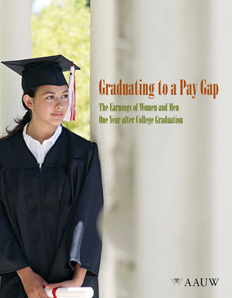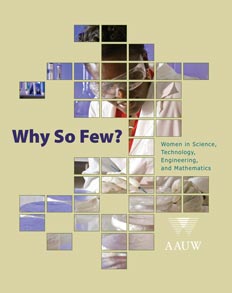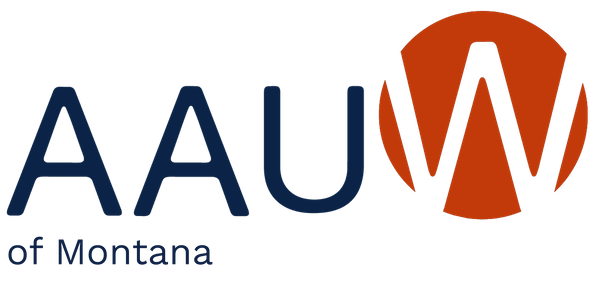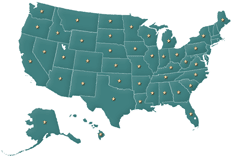AAUW-Montana publishes its newsletter, The Treasure Stater, twice a year. It is distributed electronically in full color to those members who have email addresses listed with the state. All other members receive black-and-white copies by surface mail. We welcome our web visitors to read the current and archived issues of our newsletter here.
Current Issue
Vol. 69 No. 1 ![]() (Spring 2018)
(Spring 2018)
Archived Issues
- Vol. 68 No. 2
 (Fall 2017)
(Fall 2017) - Vol. 67 No. 2
 (Spring 2017)
(Spring 2017) - Vol. 67. No. 1
 (Fall 2016)
(Fall 2016) - Vol. 66 No. 2
 (Spring 2016)
(Spring 2016) - Vol. 66 No. 1
 (Fall 2015)
(Fall 2015) - Vol 65 No 2
 (Spring 2015)
(Spring 2015) - Vol. 65, No. 1
 (Fall 2014)
(Fall 2014) - Vol. 64, No.1
 (Fall 2013)
(Fall 2013) - Vol. 63, No. 2
 (Winter 2013)
(Winter 2013) - Vol. 63, No. 1
 (Fall 2012)
(Fall 2012) - Vol, 62. No 4
 (Spring 2012) and Bylaws Insert
(Spring 2012) and Bylaws Insert 
- Vol 62, No 3
 (Fall 2011)
(Fall 2011) - Vol 62, No 2
 (Winter 2011) and Addendum (International Women’s Day Information)
(Winter 2011) and Addendum (International Women’s Day Information) - Vol 62. No 1

- Vol 61, No 4

- Vol 61, No 3

- Vol 61, No 2

- Vol 61, No 1

National AAUW Publications
Magazines and Newsletters
AAUW Outlook is the membership magazine of AAUW. Each issue provides lively, thought-provoking stories about people and issues concerning women and girls and informs readers about organizational activities related to AAUW’s mission. The current issue is available to members only; the archives are open to the public.
LAF Update provides details on cases adopted by the Legal Advocacy Fund.
LAF Express is an e-bulletin designed to keep states and branches informed on the latest activities, deadlines, and programming resources of the Legal Advocacy Fund.
Membership Matters is a bi-monthly, members-only e-newsletter for state and branch AAUW membership vice presidents.
Mission & Action is an e-bulletin that offers members information on today’s hot issues, opportunities to speak out online and through local branches, and updates on the work of AAUW.
Research Reports
 Graduating to a Pay Gap: The Earnings of Women and Men One Year After College Graduation (2012)—This report explores the earnings difference between female and male college graduates who are working full time one year after graduation. The report, which uses the latest nationally representative data, compares apples to apples by looking at the pay gap after controlling for various factors known to affect earnings, such as occupation, college major, and hours worked. It also examines one immediate effect that the pay gap has on many women: the heavy burden of student loan debt.
Graduating to a Pay Gap: The Earnings of Women and Men One Year After College Graduation (2012)—This report explores the earnings difference between female and male college graduates who are working full time one year after graduation. The report, which uses the latest nationally representative data, compares apples to apples by looking at the pay gap after controlling for various factors known to affect earnings, such as occupation, college major, and hours worked. It also examines one immediate effect that the pay gap has on many women: the heavy burden of student loan debt.
 Why So Few: Women in Science, Technology, Engineering, and Mathematics (2010)—An in-depth yet accessible profiles of eight key research findings that point to environmental and social barriers – including stereotypes, gender bias and the climate of science and engineering departments in colleges and universities – that continue to block women’s participation and progress in science, technology, engineering, and math.
Why So Few: Women in Science, Technology, Engineering, and Mathematics (2010)—An in-depth yet accessible profiles of eight key research findings that point to environmental and social barriers – including stereotypes, gender bias and the climate of science and engineering departments in colleges and universities – that continue to block women’s participation and progress in science, technology, engineering, and math.
The Gender Pay Gap (2010)—While educational gains for women are often credited with helping to shrink the gender gap in earnings, this report reveals that women typically earn 77 cents for every $1 that their male counterparts earn. And while men typically earn more than women in science, technology, engineering, and mathematics (STEM) occupations, as in other fields, the pay gap tends to be smaller in STEM fields. Also check out the related report, Behind the Gender Gap, published in 2007.
 Where the Girls Are (2008)—A comprehensive look at girls’ educational achievement during the past 35 years, paying special attention to the relationship between girls’ and boys’ progress.
Where the Girls Are (2008)—A comprehensive look at girls’ educational achievement during the past 35 years, paying special attention to the relationship between girls’ and boys’ progress.
Archived Research Reports—Check out the many other AAUW research reports, published between 1991 and 2006. Many are available for download in PDF format.

